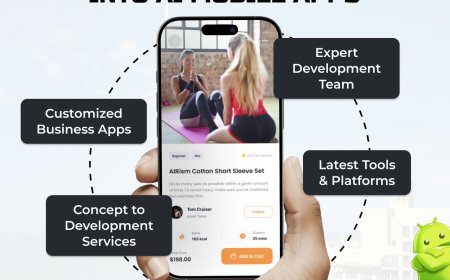Top Logo Packages to Elevate Your Website’s Visual Identity
In todays digital marketplace, a strong visual identity sets businesses apart from the competition. Logo packages have become essential tools for entrepreneurs and creatives looking to craft memorable brands. As a course provider, we recognize the growing interest in teaching individuals how to create and offer professional logo packages that enhance website aesthetics and boost brand recognition.
Whether youre exploring logo packages for your own website or learning how to develop them as a service, understanding the power and value of logo packages is key. Businesses need visual consistency, and logo packages provide just that, helping transform an ordinary website into a stunning representation of a brands story.
Logo packages combine artistic creativity with technical expertise, allowing businesses to maintain visual cohesion across all digital platforms. In this article, well explore the critical role of logo packages, what they typically include, and how training programs can prepare you to create and sell logo packages to clients who want to elevate their online presence.
The Importance of Logo Packages for Websites
A logo is often the first element visitors notice on a website. Logo packages ensure businesses have versatile, high-quality visuals suitable for various digital contexts.
For learners enrolled in courses about logo packages, acquiring the skills to design, deliver, and market these services opens doors to exciting career paths. Businesses continue to seek professionals skilled in creating logo packages that perfectly represent their brand identities.
Key Elements of Professional Logo Packages
Logo packages go beyond a single image file. Theyre comprehensive collections of assets that ensure visual consistency wherever a brand appears.
2.1 Multiple Logo Versions
A well-crafted logo package typically includes:
-
Primary logo designs for websites and print
-
Secondary logo versions for alternative layouts
-
Simplified icons or marks for small spaces
-
Horizontal and vertical layouts
Courses teaching logo packages emphasize creating versatile designs that maintain brand integrity across formats.
2.2 Scalable File Formats
Logo packages usually offer multiple file types, including:
-
Vector files (AI, EPS, SVG) for scalability
-
High-resolution PNGs with transparent backgrounds
-
JPEG files for web usage
-
PDF versions for print
Learning to prepare logo packages with appropriate file formats is a vital skill covered in professional courses.
2.3 Color Variations
Brands often need logos in different color schemes. Logo packages typically include:
-
Full-color versions for digital media
-
Black and white versions for simplicity
-
Single-color variants for printing on merchandise
Courses focused on logo packages should train students to build consistent color palettes that reflect a brands identity.
2.4 Brand Guidelines
Professional logo packages often come with brand guidelines, which include:
-
Proper logo usage rules
-
Minimum size requirements
-
Color codes for brand consistency
-
Typography recommendations
Teaching how to create comprehensive brand guidelines is a crucial component of courses about logo packages.
2.5 Favicon and Social Media Icons
Websites and social media profiles require small, recognizable images. Logo packages typically provide:
-
Favicons for browser tabs
-
Social media profile icons
-
Watermark versions for imagery
Courses preparing learners for logo packages help them produce these small but important assets.
Benefits of Logo Packages for Websites
Logo packages offer numerous advantages, making them an invaluable investment for businesses and a lucrative service for professionals.
3.1 Visual Consistency
Logo packages ensure a cohesive look across a website and all brand materials. Consistency builds trust and makes brands more recognizable.
3.2 Flexibility Across Platforms
Different platforms require different file formats and sizes. Logo packages make it easy for businesses to adapt logos for social media, websites, apps, and print materials.
3.3 Time and Cost Efficiency
Businesses save time by having all necessary logo variations at their fingertips. Logo packages also prevent costly redesigns in the future.
3.4 Professional Presentation
Logo packages help businesses look professional and polished. Training programs focused on logo packages equip learners to deliver results that meet high industry standards.
How to Choose the Right Logo Packages
Whether youre purchasing logo packages or learning to create them, knowing how to evaluate quality is crucial.
4.1 Evaluate Design Quality
Examine portfolios before choosing logo packages. Look for designs that:
-
Are clean and modern
-
Reflect the brands personality
-
Work well in various sizes and contexts
Courses teaching logo packages emphasize analyzing design quality to produce standout logos.
4.2 Check File Inclusions
Ensure logo packages include:
-
Vector files for scaling
-
High-resolution images for printing
-
Color variations
Students learning about logo packages must understand how to compile comprehensive asset folders.
4.3 Review Brand Guidelines
High-quality logo packages include brand guidelines. These documents help businesses apply logos correctly across different channels.
4.4 Assess Communication and Revisions
Good designers offering logo packages provide clear communication and opportunities for revisions. Courses on logo packages teach professionals how to handle client interactions smoothly.
4.5 Analyze Pricing and Value
Logo packages vary in price based on complexity and inclusions. Evaluate packages for value rather than choosing solely on cost.
Step-by-Step Guide to Creating Logo Packages
If youre learning how to develop professional logo packages, follow this step-by-step process.
5.1 Understand Client Needs
Begin by researching the clients:
-
Industry
-
Target audience
-
Brand message
-
Competitors
Logo packages should align with brand goals and identity.
5.2 Create Initial Concepts
Sketch or digitally create multiple logo ideas. Courses covering logo packages teach brainstorming techniques and rapid prototyping.
5.3 Refine Chosen Designs
Select the strongest concepts and refine them by:
-
Adjusting typography
-
Perfecting color palettes
-
Ensuring scalability
Logo packages benefit from thoughtful refinement before presentation.
5.4 Prepare Final Files
Organize all assets for delivery, including:
-
Vector and raster files
-
Color variations
-
Icon versions
Training programs focused on logo packages stress meticulous file preparation.
5.5 Develop Brand Guidelines
Document how to use the logos correctly. Brand guidelines help businesses maintain a consistent look, a key part of professional logo packages.
5.6 Package and Deliver
Compile everything into a structured folder with clear labels. Effective delivery is crucial for professionals providing logo packages.
5.7 Offer Support
Professionals offering logo packages should provide:
-
Guidance on file usage
-
Assistance with technical issues
-
Updates or edits if needed
Courses about logo packages often include modules on customer service and long-term support.
Why Courses on Logo Packages Are Valuable
As a course provider, we believe teaching logo packages is an excellent way to help individuals enter creative and profitable careers. Businesses consistently demand skilled designers who can deliver professional logo packages.
Courses focused on logo packages prepare learners to:
-
Create visually compelling designs
-
Prepare versatile, scalable assets
-
Develop brand guidelines
-
Manage client relationships professionally
These skills make learners valuable in freelance markets, agencies, and corporate design teams.
Common Mistakes with Logo Packages
Avoiding common pitfalls ensures successful delivery of logo packages and satisfied clients.
6.1 Ignoring Versatility
Logo packages must work across many formats and sizes. Designs should remain clear even when scaled down for small uses like favicons.
6.2 Failing to Include Guidelines
Without brand guidelines, businesses may misuse logos. Logo packages should always provide clear usage instructions.
6.3 Using Complex Graphics
Overly intricate designs may look beautiful but fail at small sizes. Logo packages should favor simplicity for readability.
6.4 Overlooking Color Options
Businesses often need logos in black-and-white or single-color versions. Logo packages should anticipate these needs.
6.5 Skipping Proper File Formats
Without vector formats, logos cant scale without losing quality. Logo packages must include appropriate file types for all potential uses.
Conclusion
Logo packages have become essential tools for any business aiming to establish a strong, professional online presence. They provide versatile, high-quality assets that ensure brand consistency and adaptability across digital and print platforms.
For course providers like us, teaching how to build logo packages empowers learners to enter a rewarding and creative field. By mastering design skills, file preparation, and client communication, students can confidently deliver logo packages that help businesses thrive.
Whether youre an entrepreneur searching for the perfect logo packages or a creative professional looking to build a career in design services, understanding logo packages is the gateway to visual branding success.













































